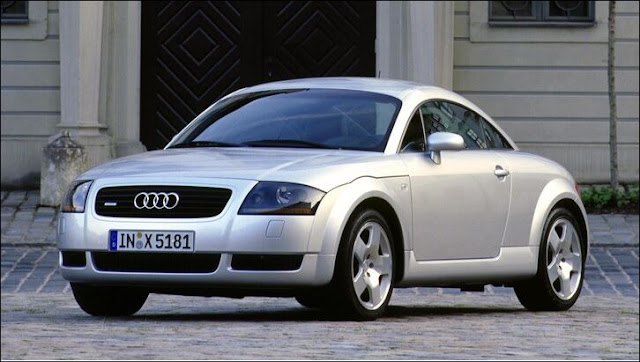The TT never sold in huge numbers, but everybody knows its name.
The Audi TT is dead; long live the Audi TT. In a recent shareholder meeting, Audi CEO Bram Schot laid out a roadmap for the brand’s upcoming models. No surprise, it’s full of EVs and crossovers—but to make space for those, some things had to go. One of those things is the TT, the iconic coupe that, at its 1998 debut, arguably set the stage for the brand’s success today. Over three generations, the TT showcased technology that would spread across the industry, and design elements no other car could match. Even if the TT is reborn as an electric sports car, there are things about the original we’ll always miss.
Style for Style’s Sake
In the 1990s, Audi needed to find its niche among German manufacturers. BMW’s calling card was driving dynamics, while Mercedes’ was full-bore luxury. The TT’s breakout design set Audi apart as a brand focused on style, and a company that builds cars for people who value crisp aesthetics. In period, the original TT’s Bauhaus-influenced shape looked fresh and futuristic, and it still appeals today. Later generations added aggression and angularity, but the impact of the first-gen car can’t be overstated.
Baseball-Stitched Seats
Few cars are remembered for how their seats are stitched, but the TT was an exception. First shown on the 1995 TTS Roadster concept, optional baseball-stitched leather seats used thick leather fibers to bind panels together, giving the interior a tailored, handcrafted look. Plenty of car seats offer contrast stitching, colored piping, embossing, or other adornments, but the TT’s robust leather stitching is and always has been unique.
Dual-Clutch Innovation
The TT was the second-ever road car to use a dual-clutch transmission (honors for first go to its Volkswagen Golf R32 relative). In 2003, Audi made a six-speed dual-clutch gearbox with paddle shifters available as an option above the standard manual, adding performance credibility to the style-focused coupe. Today, dual-clutch transmissions are commonplace among sport and supercars, but who knows how prevalent they’d be without the TT among the first to blaze the trail.
All-Wheel-Drive Traction
Audi eschews rear-wheel-drive Germanic tradition by building its vehicles on front-drive-based platforms and going all-in with all-wheel drive. The TT was no exception. It showed how all-wheel drive enhanced grip and stability in sporty driving, with improved traction and livability in daily use. Such success put pressure on competitors to expand offerings that power all four wheels.
Inline-Five Glory
Five-cylinder engines are an unusual Audi tradition that stretch back over 40 years. Therefore, a five-banger seemed a natural choice for the TT’s most performance-oriented variant. The TT RS uses a turbocharged 2.5-liter inline-five with up to 400 horsepower, enabling zero-to-60 times as quick as 3.4 seconds. The five makes a great, unique noise, too. There’s no chance the TT’s potential EV replacement will sound anywhere near as good.
Source By automobilemag.com






Post a Comment
Post a Comment